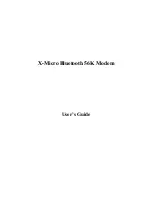
Table 7. Cable modem router specifications (Continued)
Description
Feature
FCC Part 15 Class B
VCCI Class B
EN 55 022 (CISPR 22), Class B C-Tick N10947
Electromagnetic emissions
10BASE-T or 100BASE-TX or 1000BASE-T, RJ-45
LAN
24 x 8 DOCSIS 3.0 WAN Interface
WAN
Maximum wireless signal rate complies with the IEEE
802.11 standard.
3
WiFi
2.4 GHz: Max. 400 Mbps
5 GHz Front haul: Max. 866 Mbps
5 GHz Back haul: Max. 866 Mbps
Radio data rates
IEEE 802.11b/g/n 2.4 GHz–256 QAM support
IEEE 802.11a/n/ac 5GHz-256 QAM support
Data encoding standards
Limited by the amount of WiFi network traffic generated by
each node (typically 50–70 nodes)
2.4 GHz: 127
5 GHz (front haul): 127
Maximum number of computers
per wireless network
2.4 GHz: 2.412–2.462 GHz
5 GHz: 5.18 GHz–5.24 GHz and 5.745 GHz–5.825 GHz
Operating frequency range
WPA-PSK [TKIP], WPA2-PSK [AES]
802.11 security
3
Maximum wireless signal rate derived from IEEE Standard 802.11 specifications. Actual throughput can vary. Network
conditions and environmental factors, including volume of network traffic, building materials and construction, and network
overhead, lower actual data throughput rate.
Technical Specifications for Orbi Router Model RBS20
The following table shows the technical specifications for the satellite.
Table 8. Technical specifications for the satellite
Description
Feature
TCP/IP, DHCP, Dynamic DNS, and UPnP
Data and routing protocols
120V, 60 Hz, input
Power adapter
6.4 x 3.1 x 8.0 in. (163 x 78 x 203 mm)
Dimensions
1.65 lb (748 g)
Weight
0° to 40°C (32º to 104ºF)
Operating temperature
Supplemental Information
100
Orbi WiFi System


































